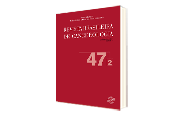The National Cancer Registry of Cuba. Process and Result
DOI:
https://doi.org/10.32635/2176-9745.RBC.2001v47n2.2331Keywords:
Cancer Registry, Information Systems, Epidemiology, Incidence, MortalityAbstract
Cancer represents a health problem in Cuba, being the second cause of death in our country. The National Cancer Registry went created in 1964 as an instrument for the epidemiological study of this disease. In 1986, important changes were introduced in the National Cancer Registry regarding organization, process and validation of the information with the implementation of a new automation information system; in 1990 a PC version of the system was developed, and in 1992 the decentralization of the process of the information to all provinces of the country (fourteen provincial cancer registries) was accomplished. The data obtained through the registry shows as main sites of incidence: lung, skin and colon for both sexes; prostate and larynx for men, and breast and cervix uteri for women. As for mortality, lung and colon for both sexes, prostate for men and breast for women are the main sites. The improvement of the quality of the information of the registry has permitted the use of the data for carrying out investigations that help to plan and assess the National Cancer Control Program.










